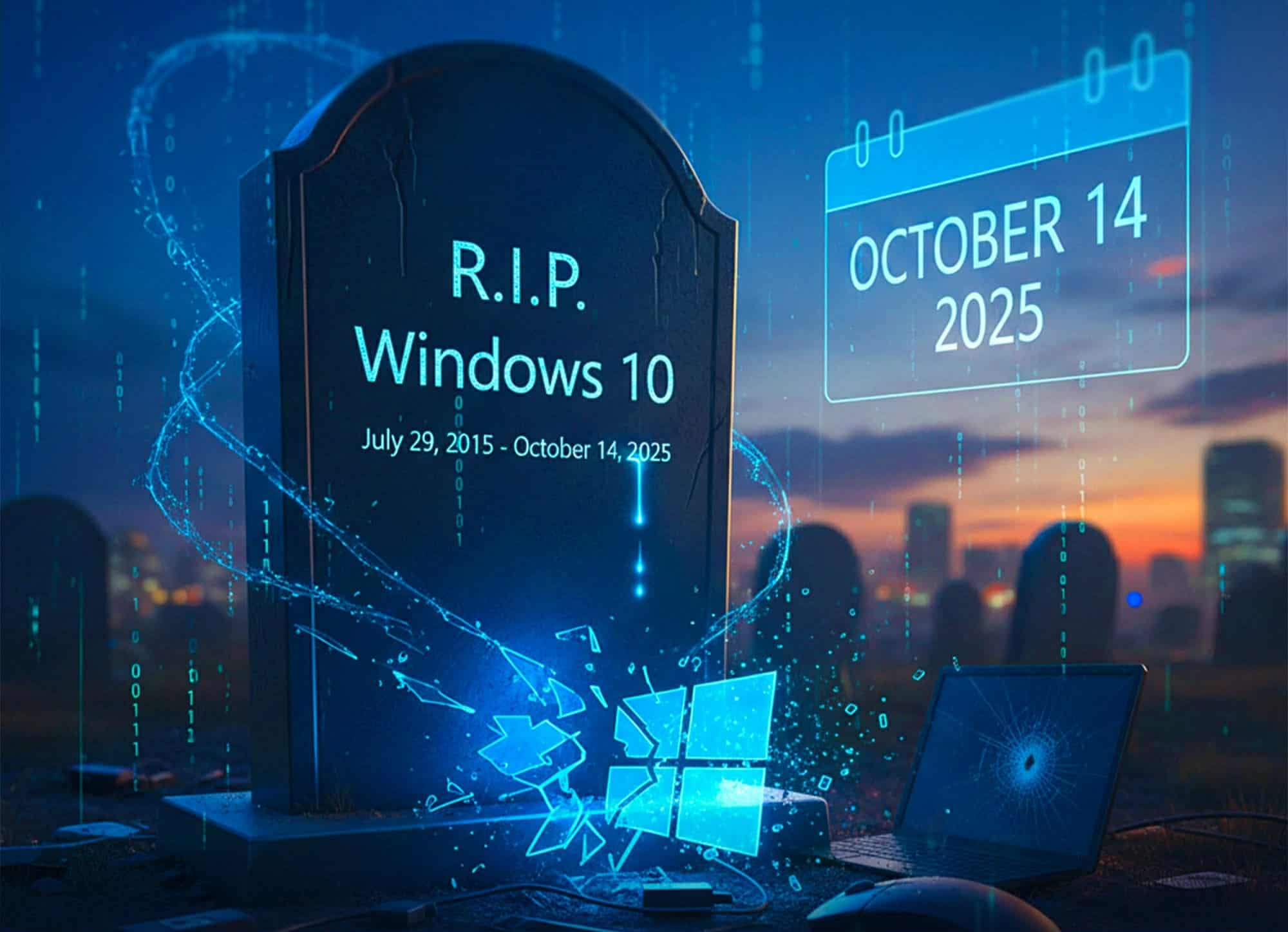Windows 10 support ends Microsoft on October 14, 2025: The End of an Era

After a decade of dominance, Microsoft has announced that support for its Windows 10 operating system will officially end on October 14, 2025. The announcement marks the closing chapter of an era that shaped modern personal computing for hundreds of millions of users worldwide.
When Windows 10 was first released in 2015, it arrived with the promise of being the “final version” of Windows—a platform that would evolve continuously rather than being replaced. Over the years, it delivered regular updates, stability improvements, and a familiar interface that bridged the old and the new. For many, it became the operating system that simply worked. But ten years later, technology and security standards have moved on, and Microsoft is ready to shift its focus entirely to newer versions of Windows.
After October 14, Windows 10 devices will still function as normal. They will start up, run programs, and look the same as ever. Yet what disappears quietly is Microsoft’s constant stream of protective updates—the invisible shield that guards computers from emerging cyber threats. Without these monthly patches, systems running Windows 10 will gradually become more vulnerable. Each new software flaw discovered after the cutoff date will remain unpatched, leaving devices increasingly exposed to attacks that exploit those weaknesses.
Recognizing that not everyone can upgrade immediately, Microsoft has introduced an Extended Security Updates (ESU) program. This paid option offers a temporary extension of critical security patches beyond the official end-of-support date. For home users, the extension lasts one additional year, while organizations can extend for up to three. It is, however, a temporary bridge, not a long-term solution. Microsoft’s broader message remains unmistakable: the company wants users to move on to Windows 11, the successor that has been under active development since its release in 2021.
Windows 11 brings a stronger focus on hardware-level security, modern encryption, and a cleaner, more integrated design. It requires features like TPM 2.0 and Secure Boot, which are standard on newer machines but missing from many older systems. Eligible users can upgrade for free, and Microsoft offers tools to check whether a PC meets the necessary requirements. For those whose computers fall short, upgrading hardware or purchasing a new system may eventually become unavoidable.
The shift also affects Microsoft’s broader software ecosystem. Support for Microsoft 365 and Office apps on Windows 10 will end at the same time, meaning even productivity software will lose guaranteed security and compatibility updates. Over time, third-party developers are also expected to phase out Windows 10 support, accelerating the system’s decline from mainstream use.
Security experts have warned that as the months pass after support ends, Windows 10 will become a growing target for attackers. Hackers often monitor end-of-life systems closely, knowing that any new vulnerability they find will never be patched. The risks will not be immediate on October 15, but they will build steadily as technology continues to advance and unprotected systems remain online.
For users and businesses alike, the final year of Windows 10 support is a reminder of how quickly the digital world moves. The operating system that once represented the future of Windows is now approaching its sunset. Its end is not sudden, but it is inevitable. Those who act early—backing up their data, testing compatibility, and planning their upgrade path—will make the transition smoothly. Those who wait may eventually find themselves locked out of the modern software landscape.
Windows 10 has been more than just an operating system; it has been a constant companion for students, professionals, and everyday users since its debut. It powered offices, classrooms, and homes through a decade of change, from the rise of streaming to the boom of remote work. Its retirement is the end of a remarkable journey in computing history. And while its familiar start menu and desktop may linger for a while longer, Microsoft’s attention has already turned elsewhere—to Windows 11, and to a new generation of technology built for the years ahead.
Latest Articles
 Why Bangladesh Is Facing Frequent Earthquakes – Simple Explanation
Why Bangladesh Is Facing Frequent Earthquakes – Simple Explanation
 Test Twenty: A New Cricket Format Set to Launch in January 2026
Test Twenty: A New Cricket Format Set to Launch in January 2026
 The Future of the Internet Is Here: How Blockchain Might Put Power Back in Our Hands
The Future of the Internet Is Here: How Blockchain Might Put Power Back in Our Hands
 The Teacher Who Chose Her Students Over Herself — Maherin Chowdhury
The Teacher Who Chose Her Students Over Herself — Maherin Chowdhury
 Asia Cup 2025: Full Schedule, Teams, Squads, Fixtures & Venues (Dubai & Abu Dhabi)
Asia Cup 2025: Full Schedule, Teams, Squads, Fixtures & Venues (Dubai & Abu Dhabi)
Latest News
 Bangladesh Hit by 5.7 Magnitude Earthquake, Strong Tremors Felt in Dhaka
Bangladesh Hit by 5.7 Magnitude Earthquake, Strong Tremors Felt in Dhaka
 Sheikh Hasina Sentenced to Death by Bangladesh Tribunal for 2024 Crackdown
Sheikh Hasina Sentenced to Death by Bangladesh Tribunal for 2024 Crackdown
 Israel and Hamas Reach First-Phase Ceasefire Deal, Hope Rises for End to Gaza War
Israel and Hamas Reach First-Phase Ceasefire Deal, Hope Rises for End to Gaza War
 England post record 304/2 to rout South Africa by 146 runs
England post record 304/2 to rout South Africa by 146 runs
 Taylor Swift Announces 12th Studio Album The Life of a Showgirl
Taylor Swift Announces 12th Studio Album The Life of a Showgirl